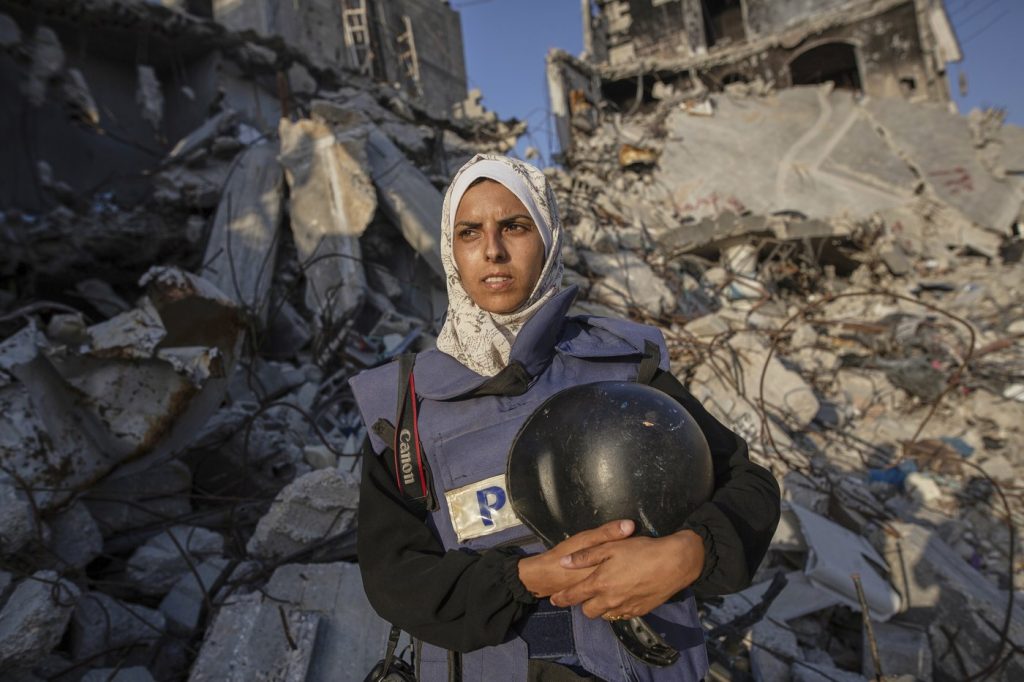Mariam Dagga, a talented visual journalist who contributed to The Associated Press and other news organizations, was tragically killed on Monday by an Israeli strike on a hospital in Khan Younis, Gaza. She was only 33 years old. Dagga was particularly known for her powerful imagery that captured the harsh realities faced by ordinary Palestinians amidst the ongoing conflict.
Throughout her career, Dagga documented the experiences of families displaced from their homes, gathered poignant scenes of people around aid trucks, captured mourners at funerals, and illustrated the work of doctors treating wounded or malnourished children. During the recent war, she consistently reported from Nasser Hospital, where she lost her life among the 20 individuals killed during the strike, including five journalists, as reported by health officials and news outlets.
Julie Pace, AP's Executive Editor and Senior Vice President, expressed immense sorrow over Dagga's death, stating, “She worked under incredibly difficult circumstances to bring stories from Gaza to the world, particularly coverage of the war's impact on children.” Pace indicated that AP is urgently seeking clarification regarding the strike that led to Dagga's demise. The Israel-Hamas war has emerged as one of the most perilous conflicts for media professionals, with at least 197 journalists reported killed in Gaza during the 22-month-long conflict, significantly outpacing the 18 journalists killed in the war in Ukraine according to data from the Committee to Protect Journalists.
In April, Dagga made a heartfelt appeal via the social media platform Eye on Palestine, calling on the international community to protect journalists in Gaza and advocate for an end to the war. In one of her final social media posts, she issued a stark warning about the dangers throughout Gaza, stating, “Every place is dangerous, is hit by airstrikes … In every home there is a story. In every home there is a detainee. In every home, there is suffering.”
Born in Khan Younis, Dagga earned her degree in journalism from Al-Aqsa University in Gaza. Her journalistic career began in 2015. She leaves behind a 13-year-old son who relocated to the United Arab Emirates at the start of the war to live with his father. Dagga frequently communicated with her son, who expressed a desire to return to Khan Younis to be with her.
At Dagga’s funeral, her family and colleagues mourned deeply. Her body was wrapped in white, with a single red flower delicately placed beside her face. Her sister, Nada, shared that Dagga had previously donated a kidney to their ailing father. Despite being displaced multiple times during the war, Dagga remained committed to her work, illustrating the conflict’s toll on health care, particularly its impact on the lives of children and families in Gaza.
Sarah El Deeb, an AP reporter based in Beirut, commented on Dagga's readiness and professionalism, stating, “Dagga stayed close to Nasser hospital and was able to see through the cruelty of the war with the skills and patience to report on its cost to the people of Gaza, its doctors, children and mothers.” Dagga’s recent coverage of malnourished children earned her an internal AP award, showcasing her remarkable dedication to her craft.
Adhwan Alahmari, Dagga's editor at Independent Arabia, praised her as one of the most ethical and dedicated reporters, calling the strike that killed her a “flagrant violation of international laws.” Wafaa Shurafa, AP’s senior producer in Gaza, recalled Dagga’s willingness to assist anyone in need, her unyielding positive spirit in the face of adversity, and the deep respect and affection she garnered from her colleagues. Shurafa recounted missing a call from Dagga after the initial strike on the hospital, expressing her worry and disbelief upon learning of her colleague’s tragic fate.
This profound loss serves as a stark reminder of the dangers that journalists face while reporting from conflict zones and the critical role they play in helping the world understand the human impact of war.










